We had a great privilege of hosting a field growing study group at Underhill this past week. Randy Bennett, of the Greater New Orleans Bonsai Society, brought a group of 18 eager bonsai enthusiasts to learn how to develop trident maples in one of our grow fields. He covered how to cut for proper taper, plan for future branch placement, and prep the trees for root work. I wanted to share some photos and experiences of the event as it was eye opening and endearing. I just love it when a group of people get together to simply learn how to create their own bonsai from the ground up and I could tell there was all around good vibes. I cannot wait to see what these study group participants will create with Randy’s instruction as I believe they will be truly special trees.
“I was excited to see how many people were interested in participating. It was hard for some people to make such severe cuts, but I think people ultimately trusted my guidance. The hardest thing for people to let go of was trying to identify 1st branch, 2nd branch, etc. and realize that field growing is only about developing great nebari and great taper in the trunk line. People had to realize that developing branches is a distant second when it comes to field growing. When we take them out of the ground in 3-4 years and start growing them in wooden grow boxes, that’s when branch development becomes the focus. My hope is that everyone will have a real showpiece specimen when we finish and that they have a good start on developing that “melted” base we do often see in trident maples.”
-Randy Bennett
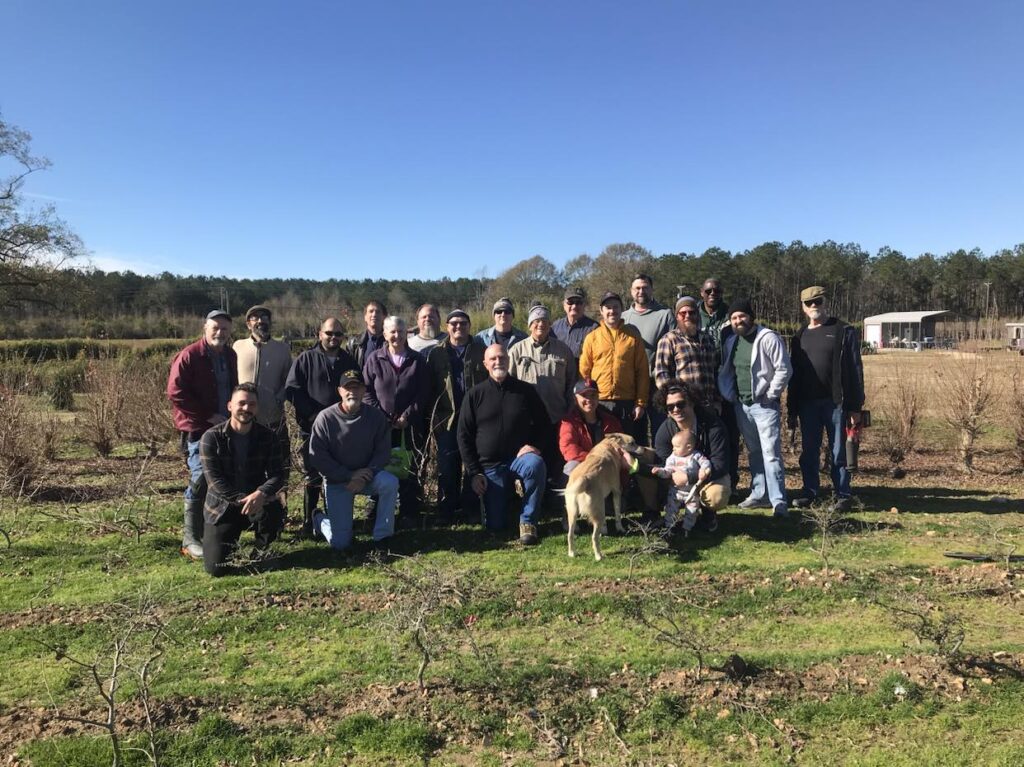
The field working crew ready to get to chopping and carving the trident maple field stock. This was good mixture of Greater New Orleans Bonsai Society members and few fresh faces.
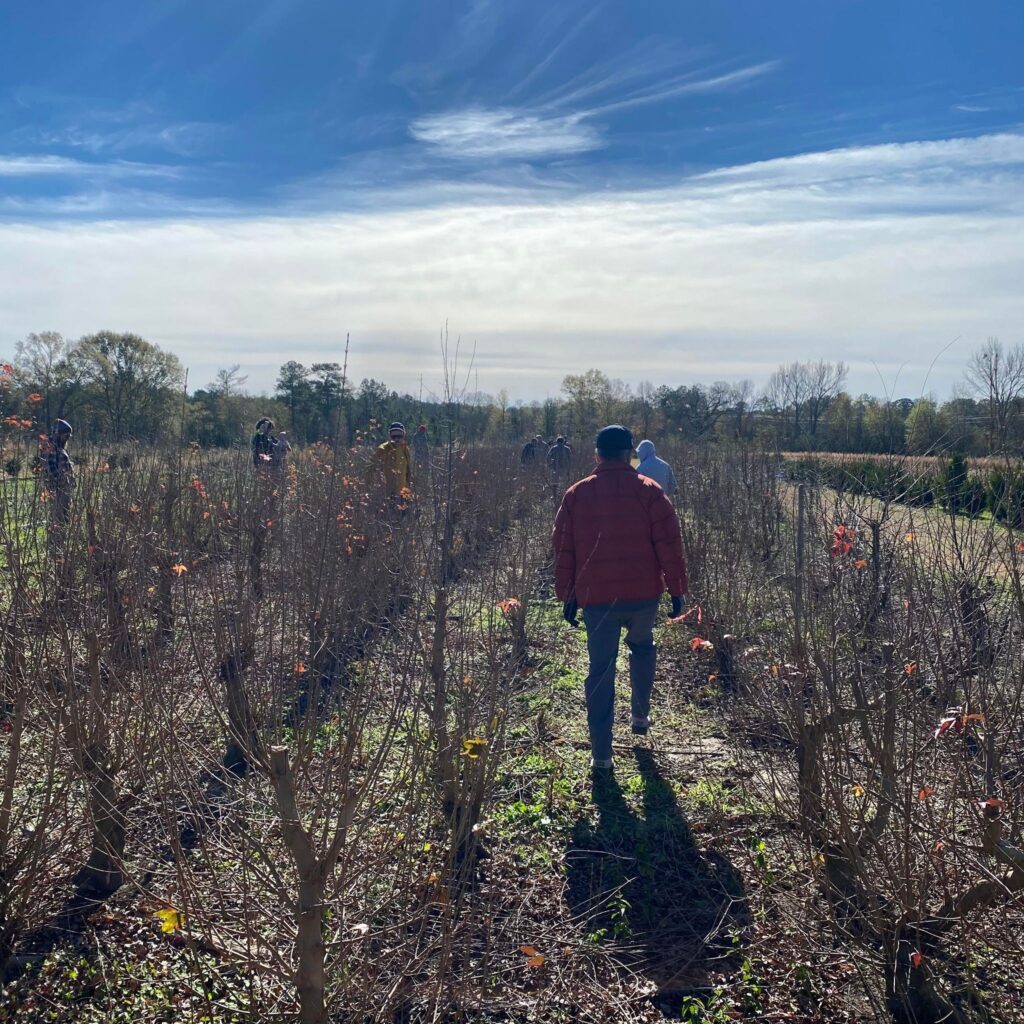
Randy gave them light instruction on what look for as far as their ideal trident maple. As quoted by Randy earlier in this article, he told them to look for quality trunks and roots that are close to what they would imagine would make a great nebari. He wanted to leave it up to their discretion as to what tree would be their long term project.
Pictured above, the study group participants walking the rows of raw trident maples. These tridents were allowed to grow freely for three years before being chopped to around a foot tall and then left to grow freely again for another year. Each year that a trident doesn’t get worked in the ground or collected for retail in our field, they are hedge pruned back to maintain their size. If they are left to grow too wild and too long they can begin to develop major issues such as over crowding and inverse taper.
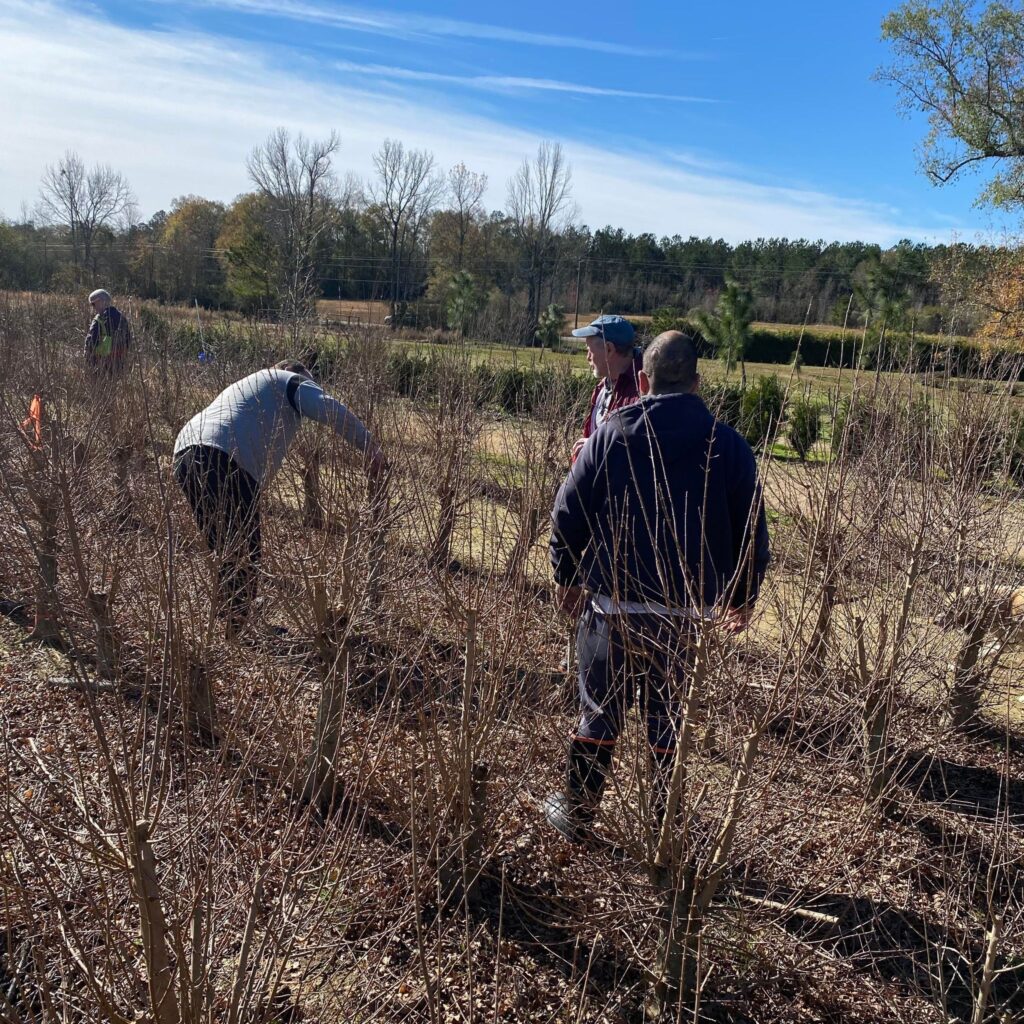
We have roughly five hundred raw trident maples in the field currently, at least in this area of the nursery. We are starting more cuttings this coming season for another field to manage in the future. A grow field of stock like this leaves many opportunities for work when it comes to developmental choices. For instance, some trees can be chopped even lower to develop a sumo style bonsai or the thicker branches and flaws can be removed for informal uprights. Some trident maples can even be left to be skinny and taller for forest plantings.
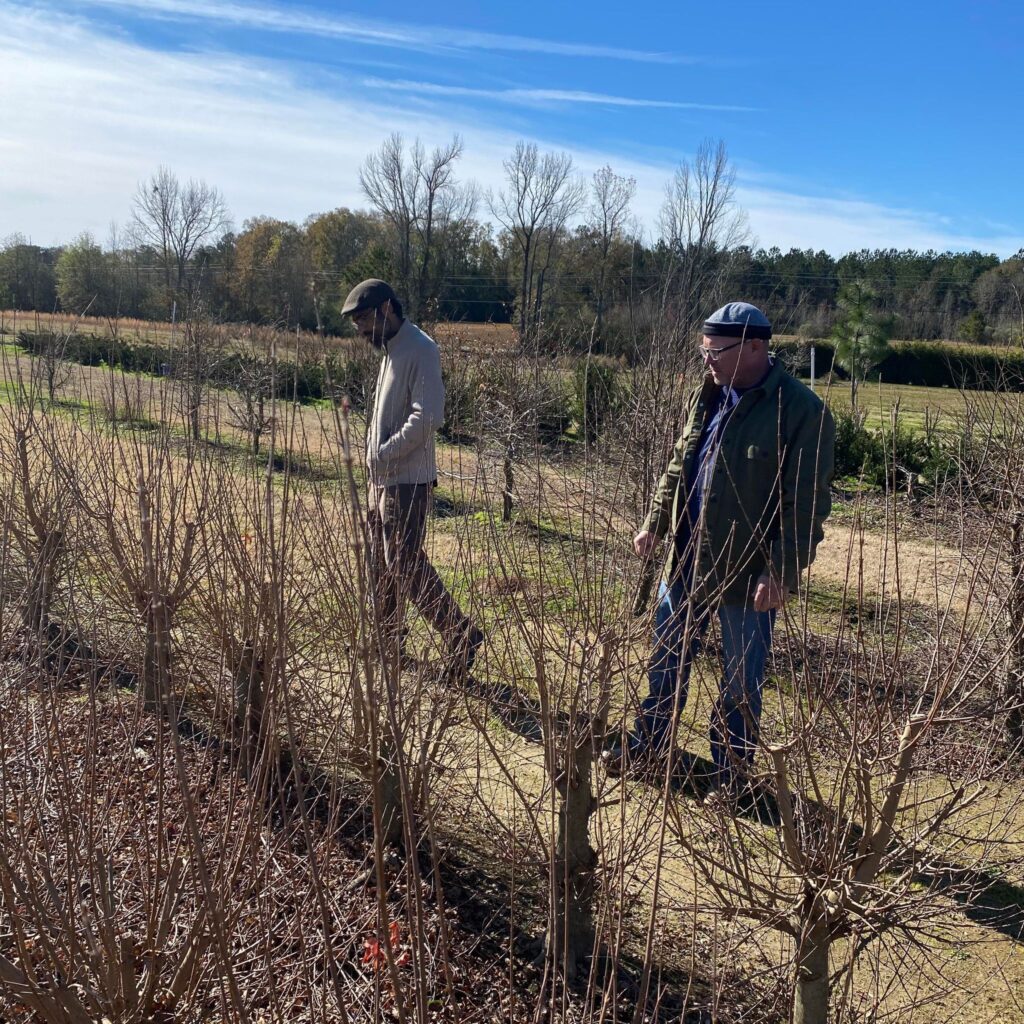
The participants must make careful consideration when selecting their project trees. Randy’s plan and timeline will be over the coarse a 3-4 years. Today is chopping day and then in the early spring time, in about a month’s time, they will return to dig the trees up and transplant them. The trees will be put back into the ground again but the propose of digging them up is to make corrections to the root core. The trees will also be planted onto ceramic tiles to further push their roots lateral. This will also deter the trees from growing overly large tap roots and cause them to “plate” making the process of future bonsai container selection easier.
Ideally, if the trident maples have nice pancake style roots they would look best in the shallowest bonsai pot they can possibly fit in.
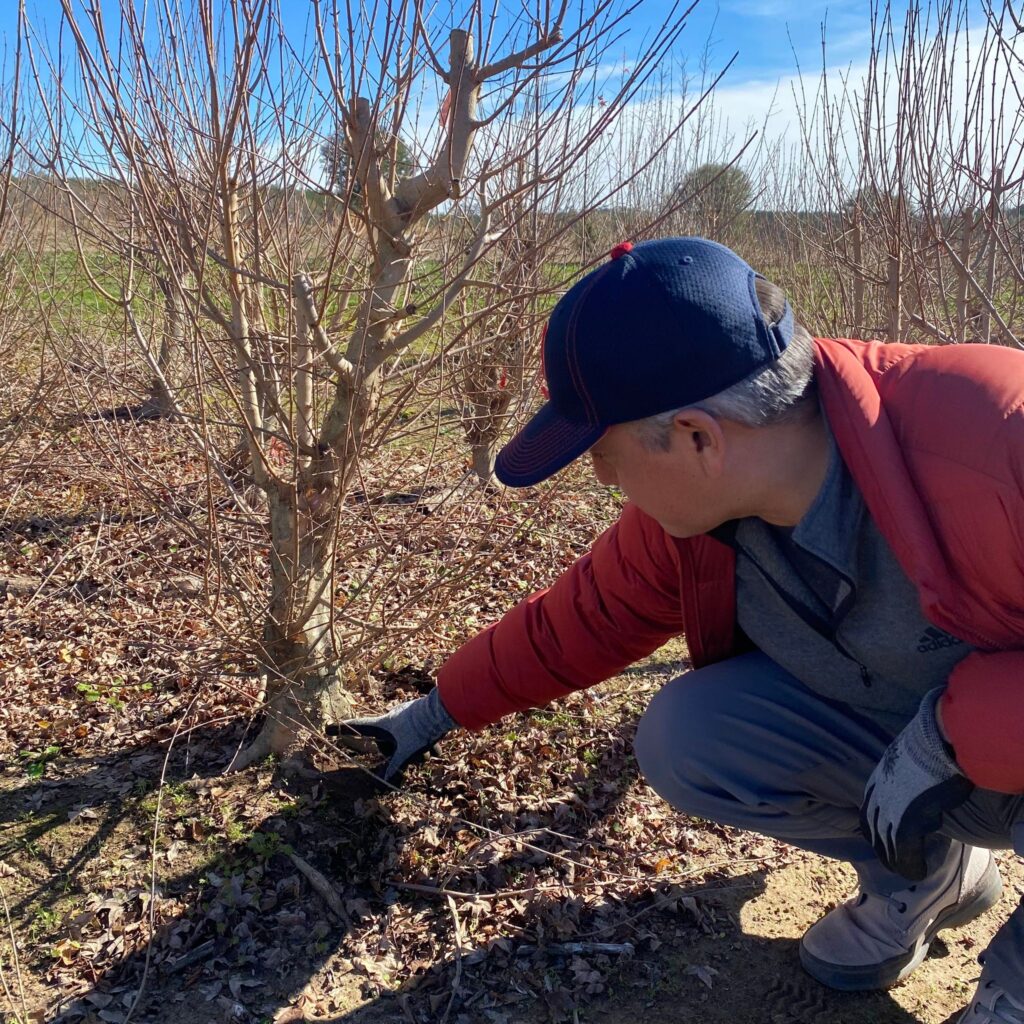
Pictured above is one of the participants inspecting the surface roots on his tree.
Randy informed me that in 3-4 years, after the trunk lines have been established and the wounds healed, that they would dig the trees up and grow them in wooden grow boxes. This growing technique will help slow the branch development so they do not get out of hand and get too large. The goal is to develop a scar-less trunk as well. Slowing branch develop will help with unnecessary large branch removal resulting in larger wounds.
Trident maples are excellent at healing over large wounds but too much scar tissue will not yield budding material on the bare trunk resulting in bald spots. This can be corrected with approach or thread grafting but its better to develop the branches properly first to cut out the possible failures of such work.
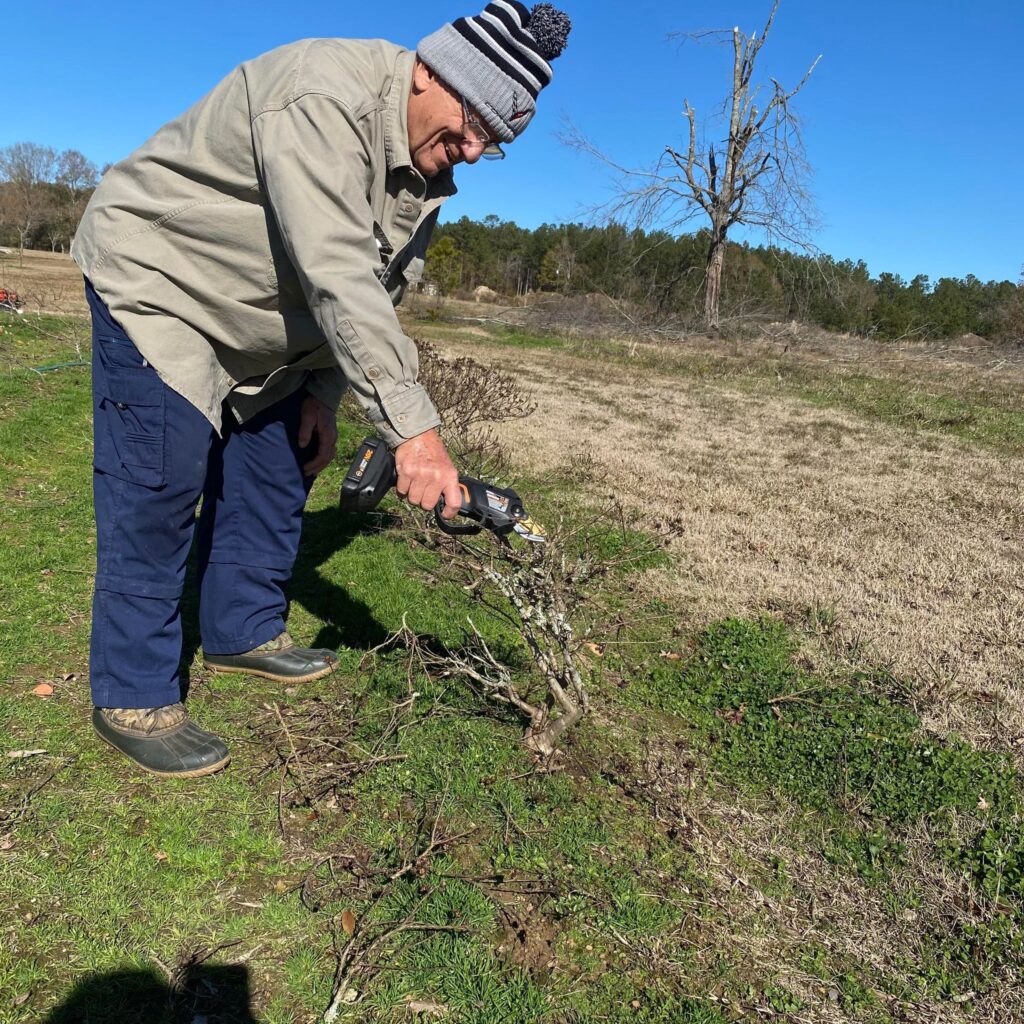
Picture above is one of the long time Greater Orleans Bonsai Society club members, Felix, trimming back ‘Pocomoke’ crape myrtles. These crape myrtles will be grown out in a similar manner to the trident maples for future workshop material for the club. As one of the offerings we have at the nursery for the local bonsai clubs is to work with them in developing future workshop materials and auction trees on our grounds. Access to open fields to grow out trees isn’t always available and we do what we can to help the clubs out.
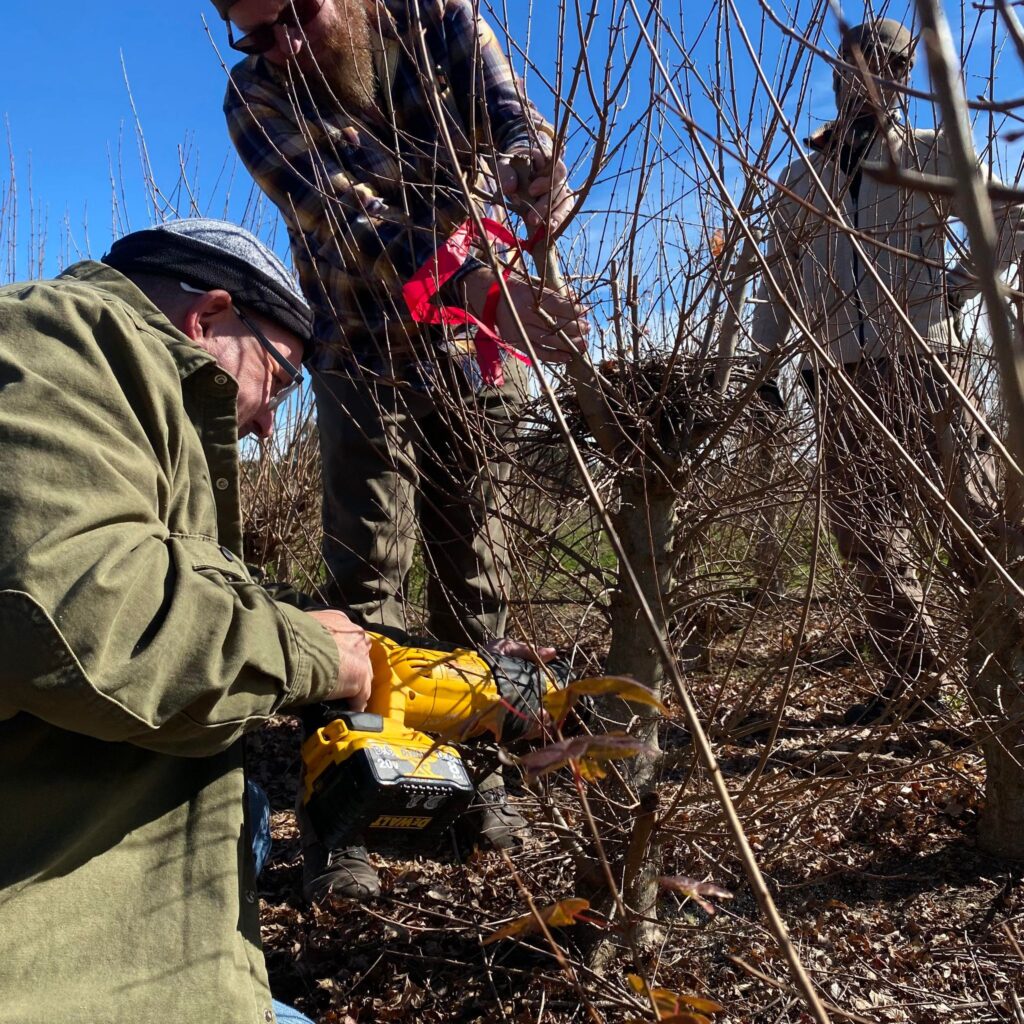
Reciprocation saws are usually the tool of choice for chopping down field grown material. Making sure we’re using the sharpest blades possible to make clean cuts and make sure we do not tear the thin cambium layer.
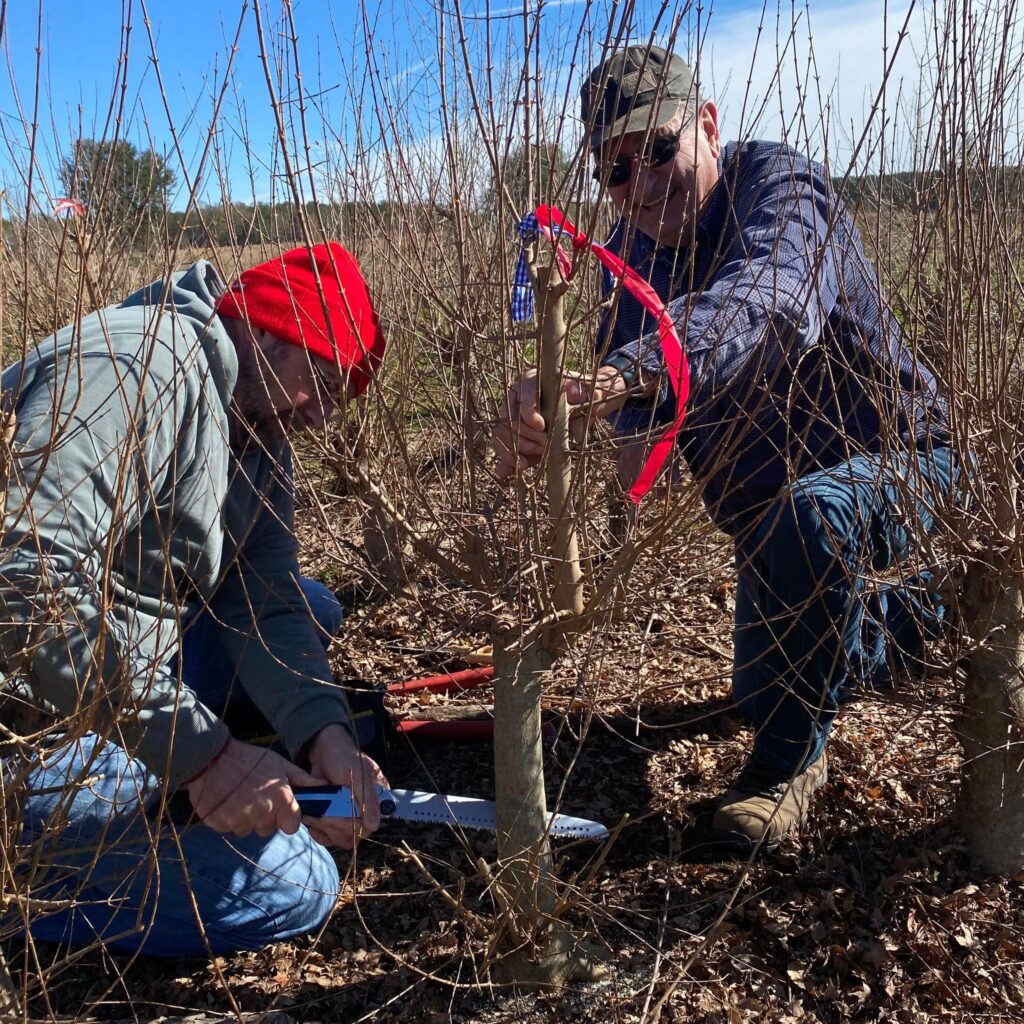
“Silky” brand folding saws are also a great choice for chopping the trees down. With a manual saw you can have much more control with much more physical effort needed. This is all preference of course.
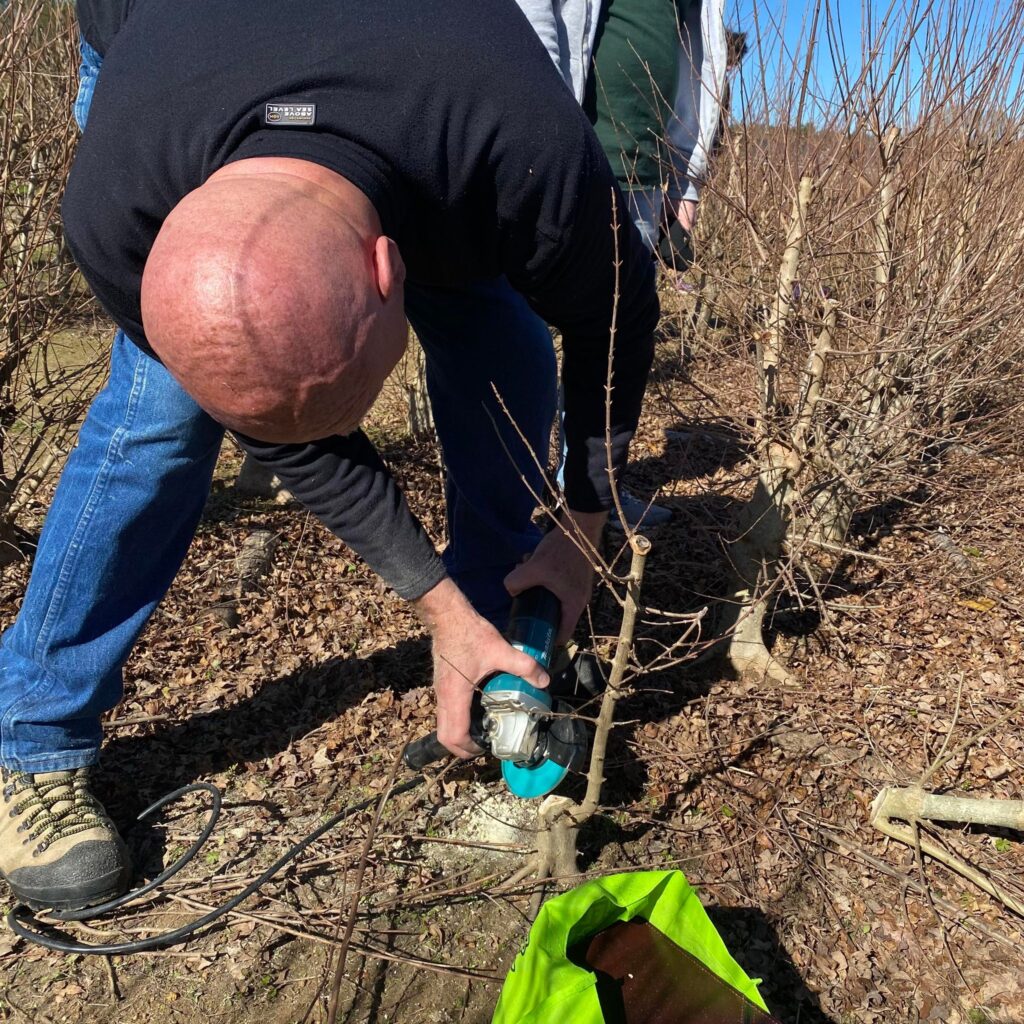
After the trees have been cut down a die grinder is used to smooth out the cuts. Convex carves are made so that the trees will heal a nice natural looking transition into the new leaders. Trident maples are aggressive growers when they are in the ground. In our zone in southeast Louisiana trident maples can grow as much as 3-4 feet a year. With that rate of growth, new leaders can be grown to the appropriate proportions fairly quickly.
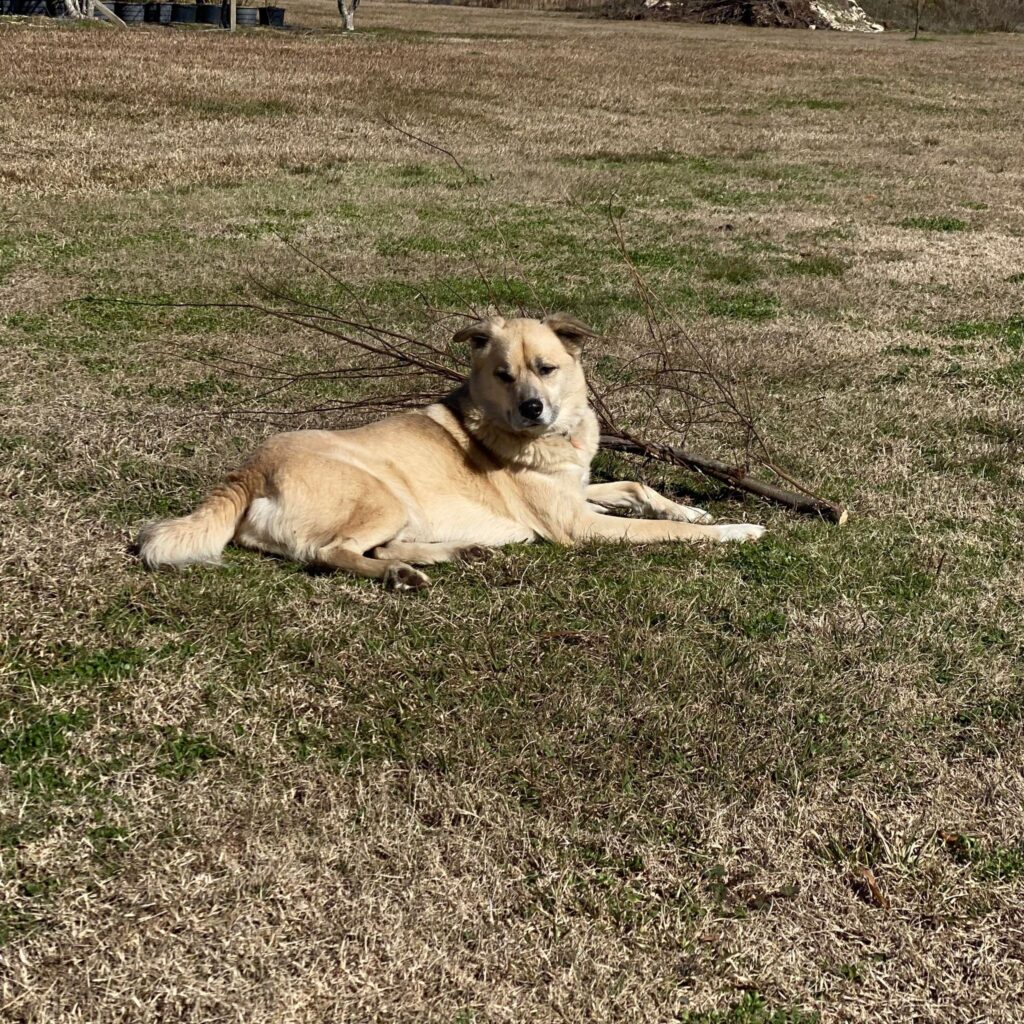
Our branch manager, Mac the dog, was supervising and checking the quality of the cuts being made on each trident maple. No stick goes unchecked under his watchful eye.
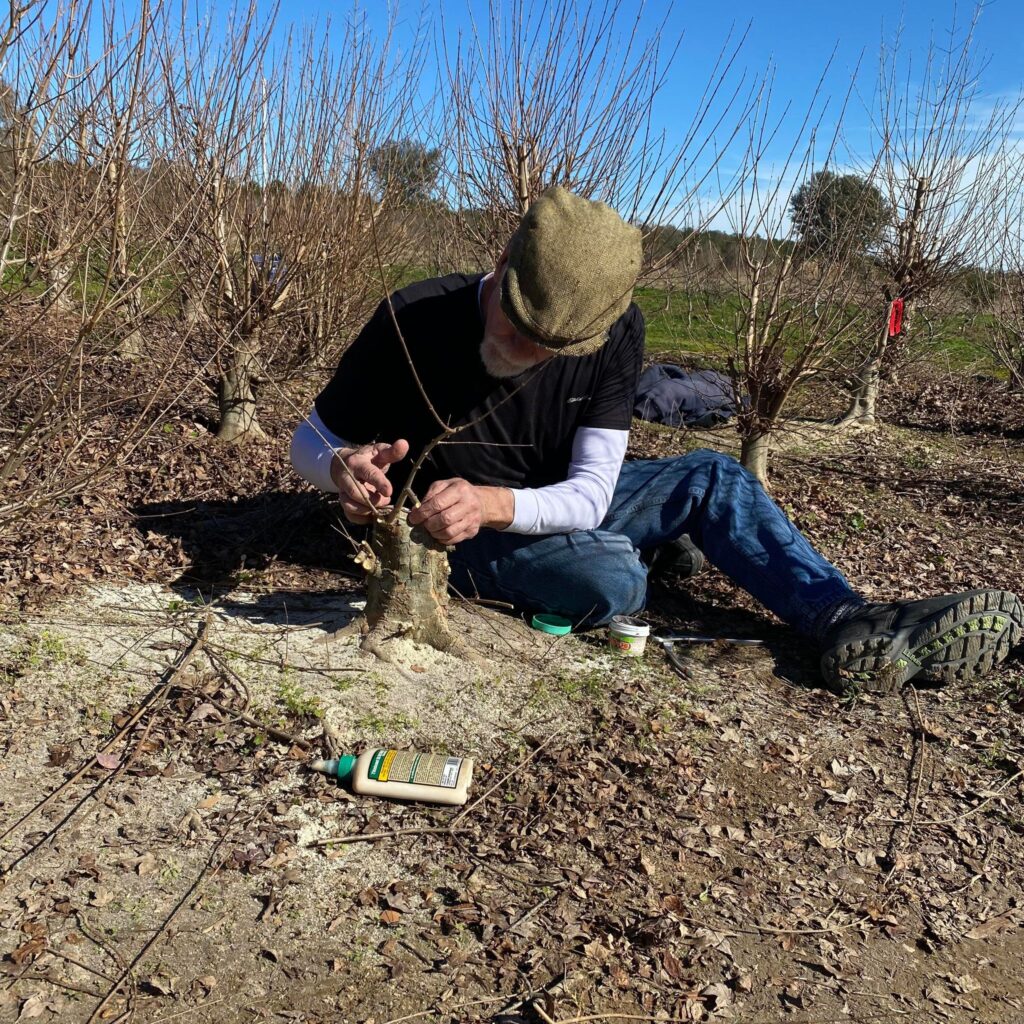
After the large cuts were made, the wounds need to be properly dressed. Wood glue can be useful here as well as cut paste. Long term dressings need to be applied as it will take 2-3 years to get good cambium rolls on these cuts. Keeping the heartwood firm will help the wounds heal as punky heartwood wood will collapse and never truly heal proper
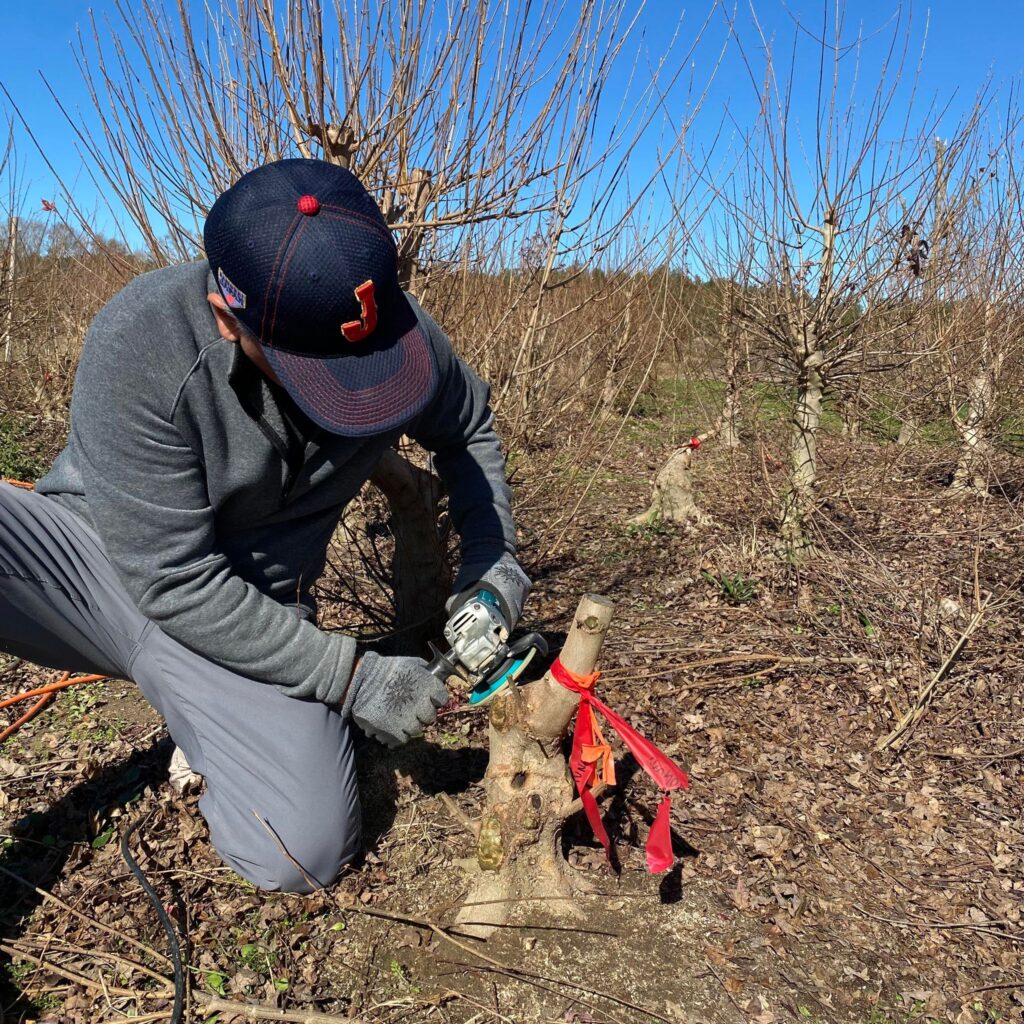
Pictured above, final touches being made on a trident maple. If you look closely as this tree you can see the other cuts and wounds that have been reworked and carved again to further correct the faults in the trunk. Adding more scar tissue to a tree’s trunk could be an upside during its development adding more character and interest.
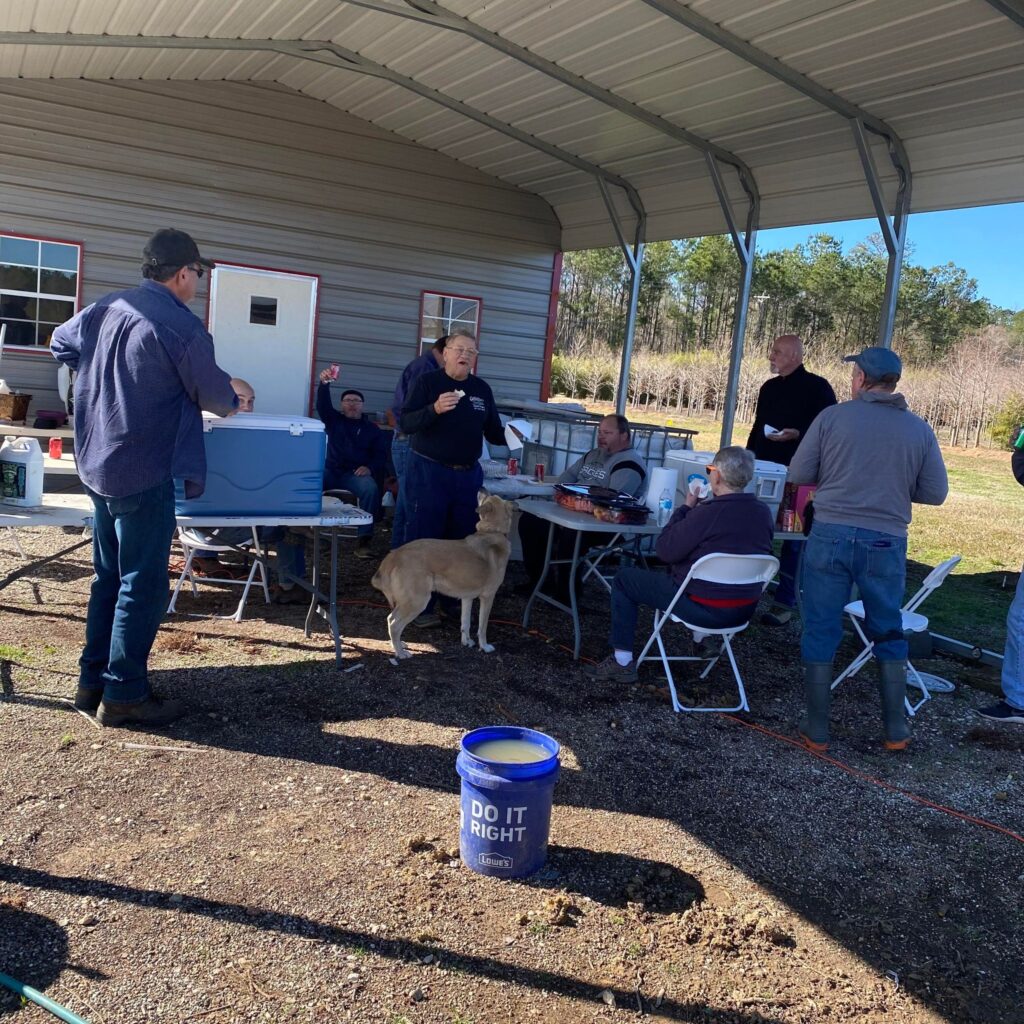
After about 4-5 hours of work in the field, the crew took their late lunch. Spirits always seem to be higher after working on bonsai and it could definitely be felt with this group!
The following photos are a handful of the trident maples that were worked by the group study participants. A lot of potential can be seen in each of these trees.
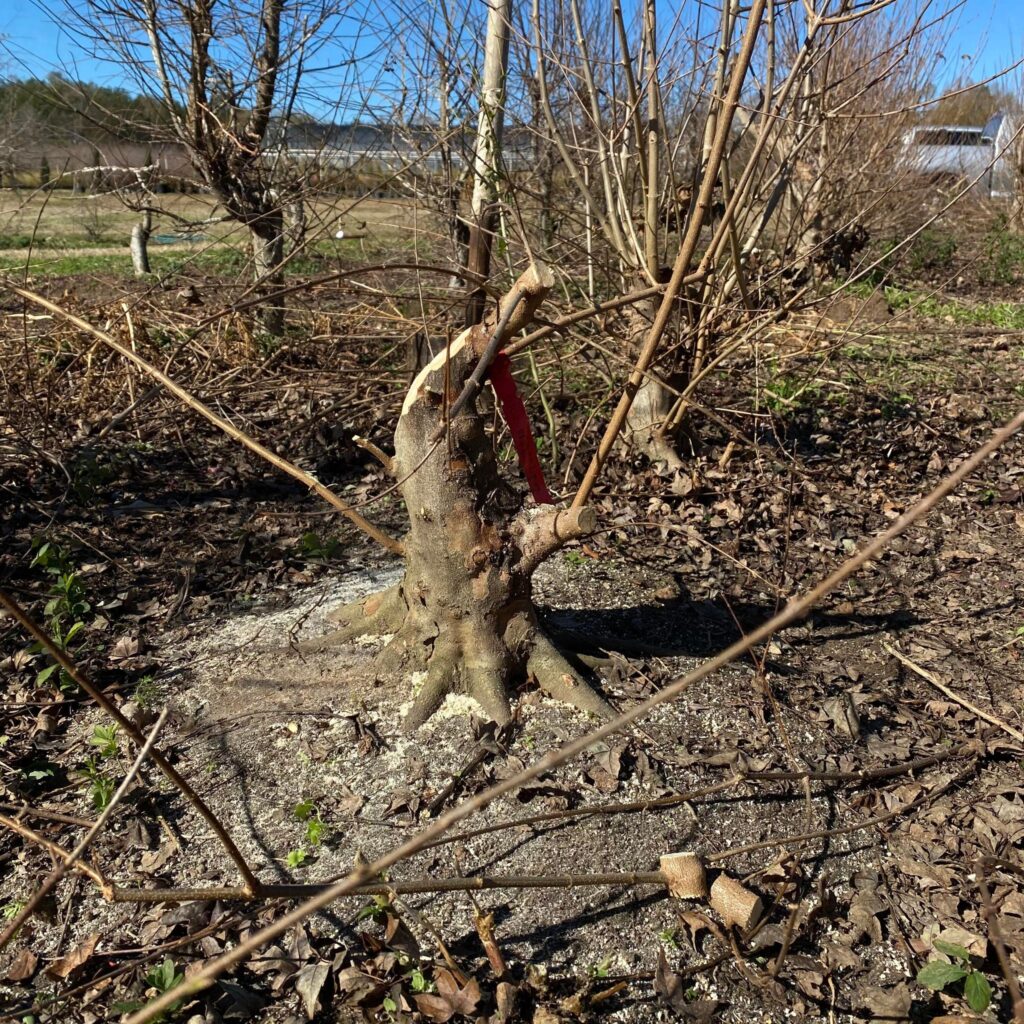
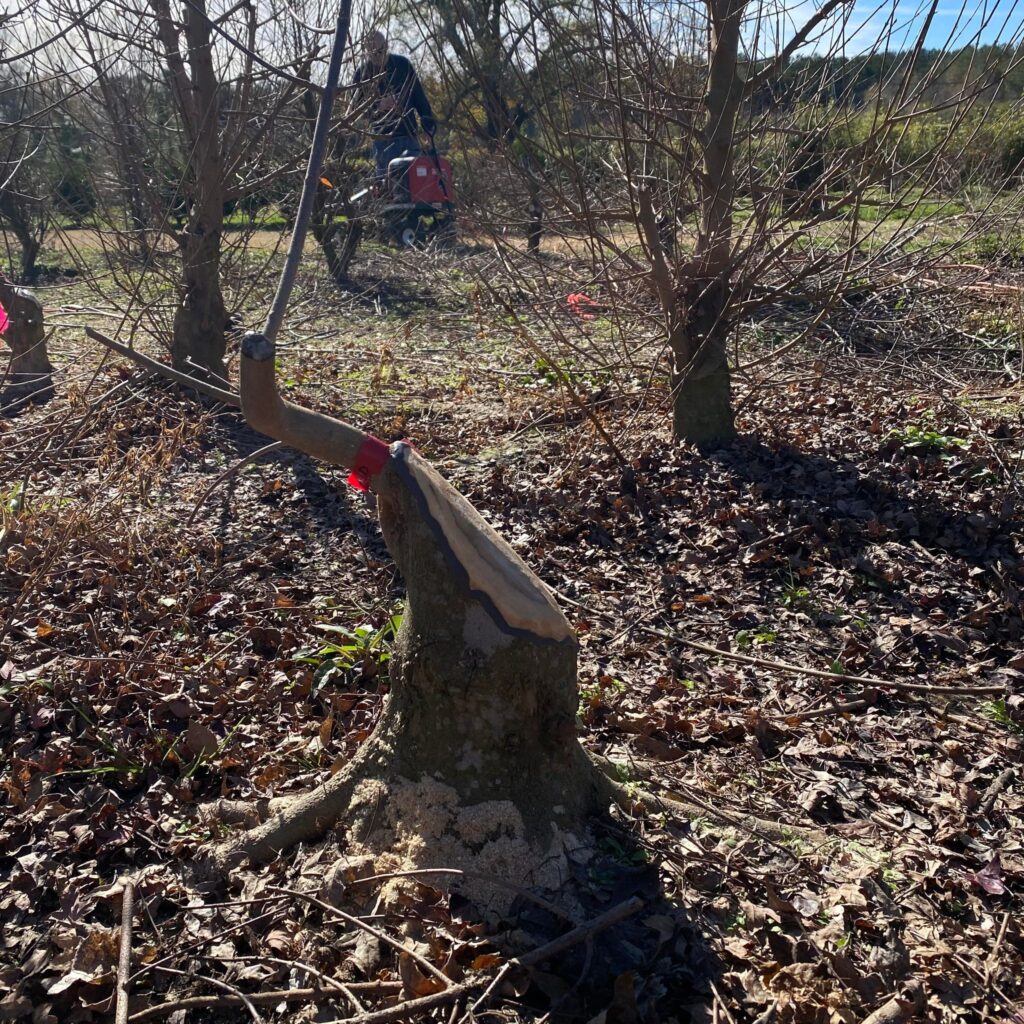
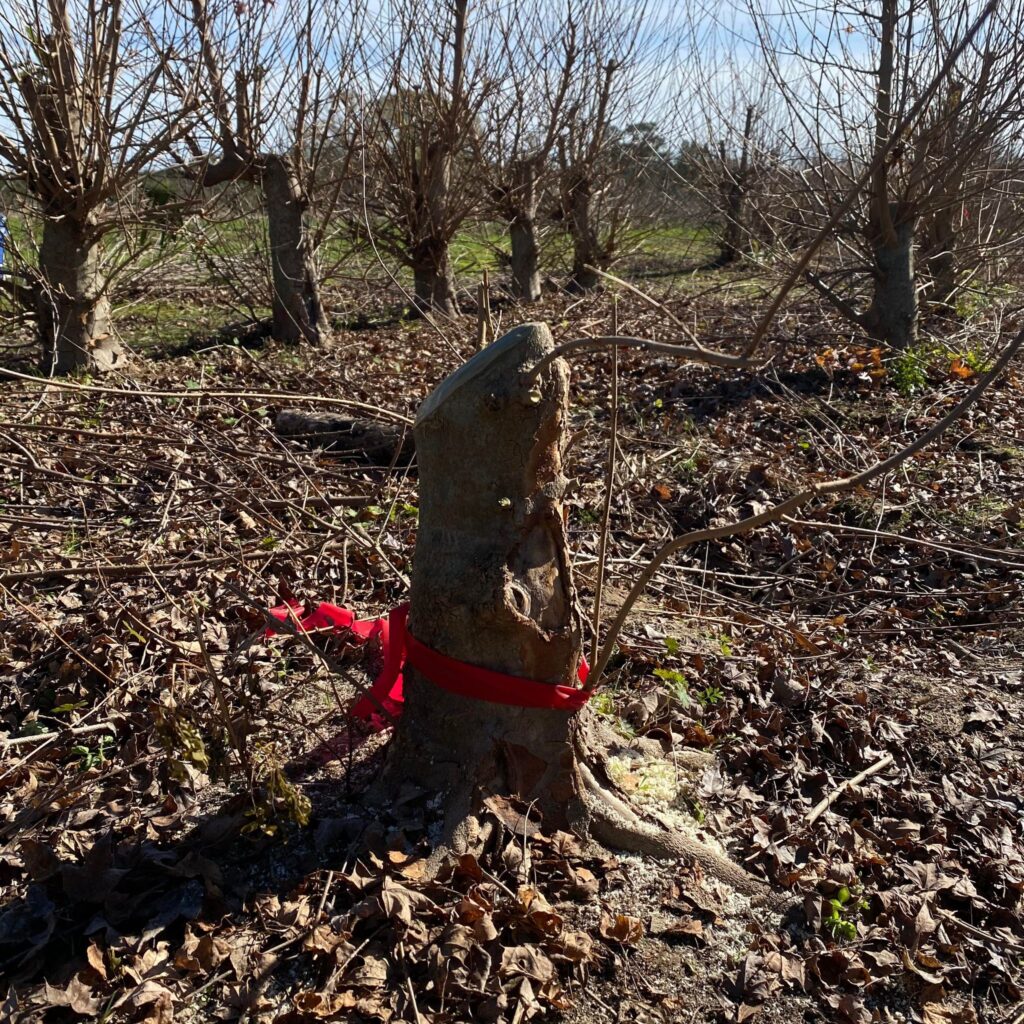
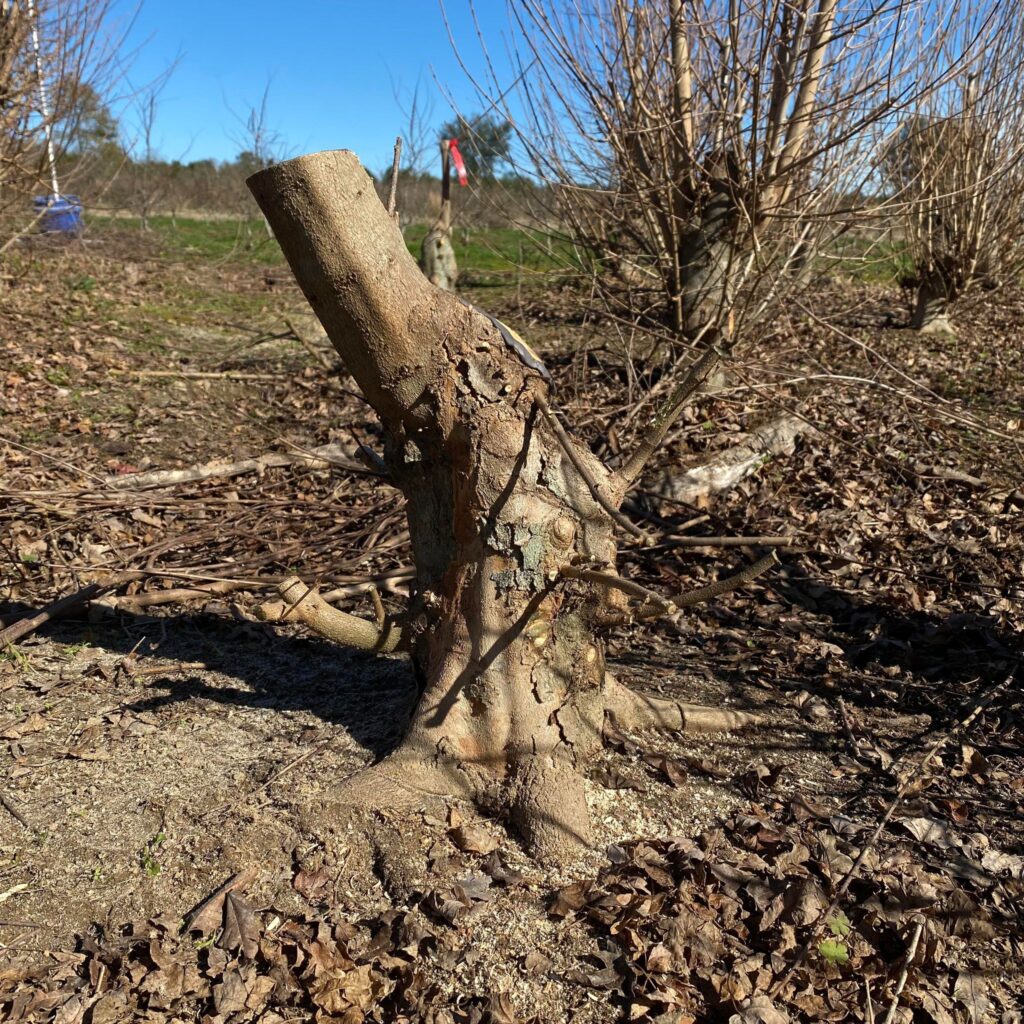
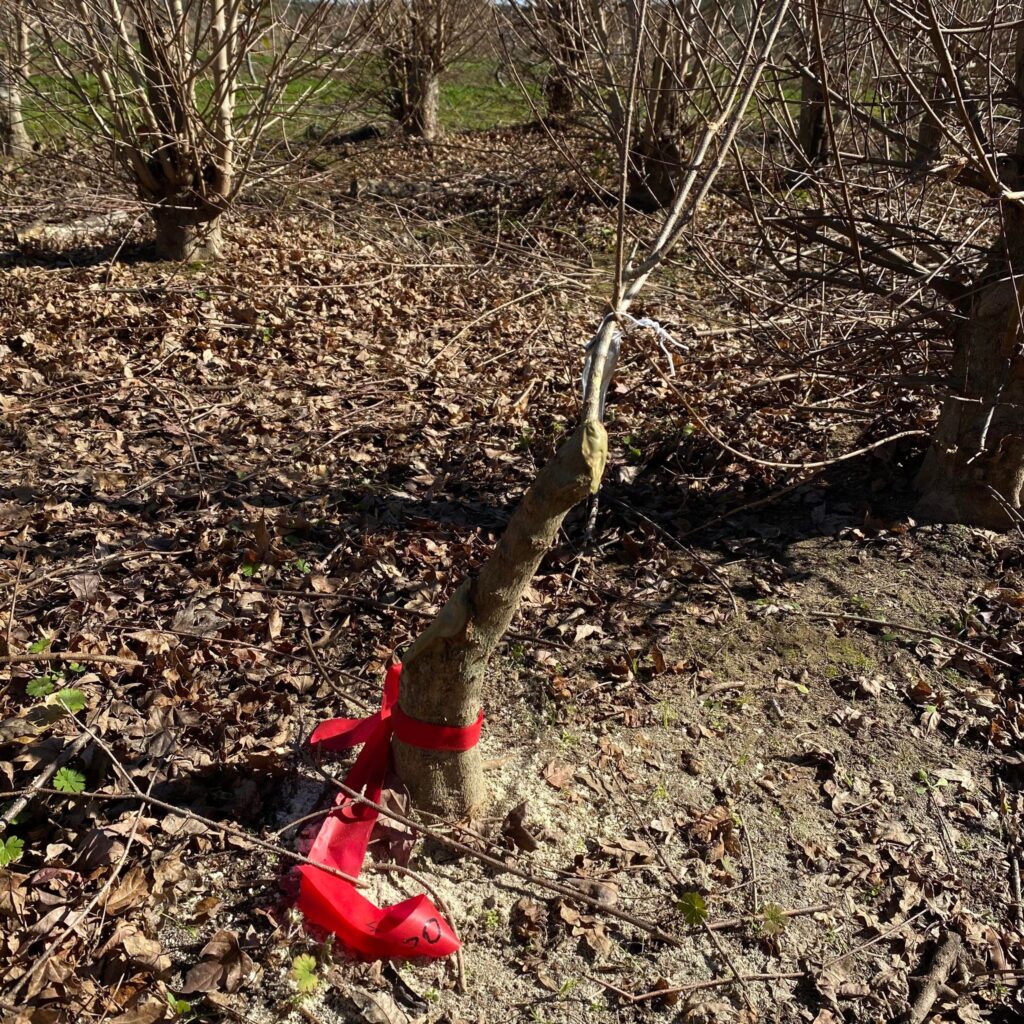
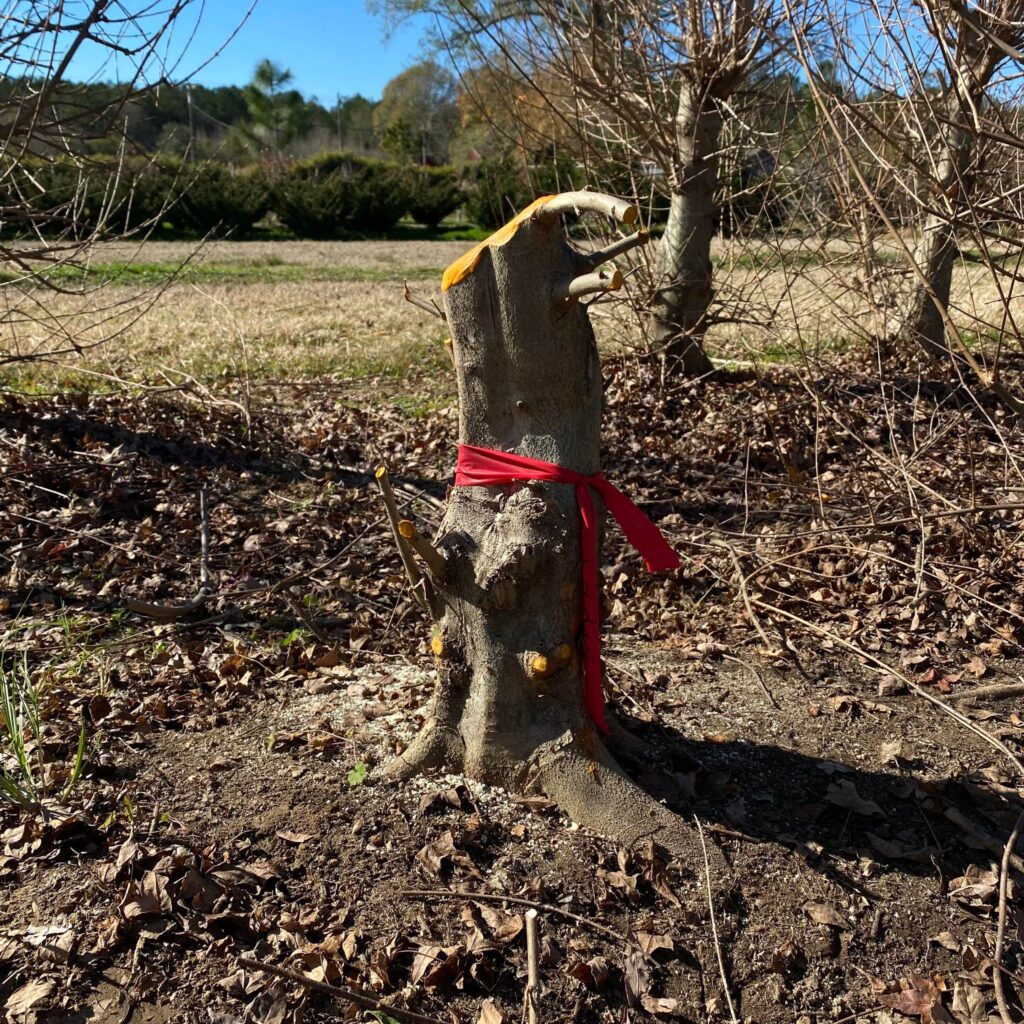
I’m really looking forward to what the next couple of years will be like for these trees. Long term projects like this is what we need more of in the little big bonsai world.
-Evan
